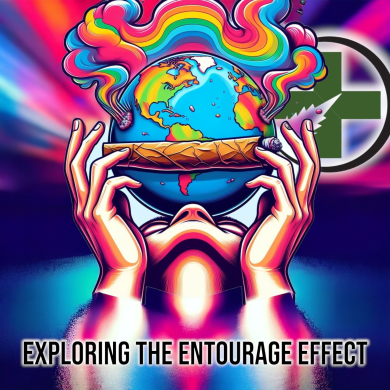Exploring the Entourage Effect: How Different Cannabinoids Work Together

Exploring the Entourage Effect: How Different Cannabinoids Work Together
In the world of cannabis research and consumption, there's a fascinating phenomenon known as the entourage effect. This effect suggests that the various compounds found in the cannabis plant work together synergistically, enhancing each other's therapeutic effects. At the heart of this concept lies the intricate interplay between cannabinoids, terpenes, and other phytochemicals present in cannabis. Understanding the entourage effect can provide valuable insights into how we perceive and utilize cannabis for medicinal and recreational purposes.
Cannabinoids: The Chemical Messengers
Cannabinoids are the primary chemical constituents of cannabis responsible for its physiological and psychoactive effects. The most well-known cannabinoid is delta-9-tetrahydrocannabinol (THC), which is responsible for the plant's psychoactive properties. However, THC is just one of over a hundred cannabinoids identified in cannabis. Another prominent cannabinoid is cannabidiol (CBD), which has gained significant attention for its potential therapeutic properties, including anti-inflammatory, analgesic, and anxiolytic effects.
Beyond THC and CBD, there are several other cannabinoids present in varying concentrations in cannabis, such as cannabigerol (CBG), cannabinol (CBN), and tetrahydrocannabivarin (THCV). Each cannabinoid interacts with the body's endocannabinoid system (ECS), a complex network of receptors and neurotransmitters involved in regulating various physiological processes, including mood, appetite, pain sensation, and memory.
Terpenes: Aromatic Allies
Terpenes are aromatic compounds found in many plants, including cannabis. They are responsible for the distinctive aromas and flavors associated with different cannabis strains. More than just providing sensory enjoyment, terpenes also play a crucial role in the entourage effect. Research suggests that terpenes can modulate the effects of cannabinoids by influencing their absorption, metabolism, and overall pharmacological activity.
For example, the terpene myrcene, commonly found in cannabis as well as in hops and mangoes, is believed to enhance the sedative effects of THC, potentially contributing to the relaxing properties of certain strains. On the other hand, limonene, which imparts a citrusy aroma, may have an uplifting and mood-enhancing effect when combined with cannabinoids like THC or CBD.
The Entourage Effect: Greater Than the Sum of Its Parts
The entourage effect proposes that the combined action of cannabinoids, terpenes, and other phytochemicals in cannabis results in a more potent and effective therapeutic outcome than any single compound alone. This synergistic interaction can lead to enhanced pain relief, anti-inflammatory effects, neuroprotective properties, and more.
For instance, while THC is known for its analgesic properties, CBD has been shown to mitigate some of the undesirable side effects of THC, such as anxiety and paranoia. Additionally, certain terpenes, such as beta-caryophyllene, have exhibited anti-inflammatory effects through their interaction with cannabinoid receptors, further augmenting the therapeutic potential of cannabis.
Implications for Medical Cannabis
The entourage effect has significant implications for the medical use of cannabis. By harnessing the synergistic interactions between cannabinoids and terpenes, researchers and clinicians can potentially develop more effective cannabis-based therapies with fewer adverse effects. This holistic approach to cannabis therapeutics considers the complex interplay of multiple compounds, offering a more comprehensive understanding of how cannabis affects the body and mind.
Moreover, the entourage effect underscores the importance of whole-plant medicine, advocating for the use of cannabis in its natural, unadulterated form rather than isolating individual compounds. While pharmaceutical formulations of THC or CBD may offer standardized dosing and consistency, they may lack the diverse array of compounds present in whole-plant cannabis, potentially limiting their therapeutic efficacy.
Conclusion
The entourage effect represents a paradigm shift in our understanding of cannabis pharmacology, highlighting the intricate synergy between cannabinoids, terpenes, and other phytochemicals. By exploring this phenomenon, researchers can uncover new insights into the therapeutic potential of cannabis and develop more targeted and personalized treatments for various medical conditions.
As legalization and scientific research continue to progress, it's essential to embrace the complexity of the cannabis plant and appreciate the synergistic interactions that contribute to its therapeutic effects. Whether for medical or recreational use, understanding the entourage effect allows us to unlock the full potential of cannabis as a versatile and multifaceted botanical medicine.
